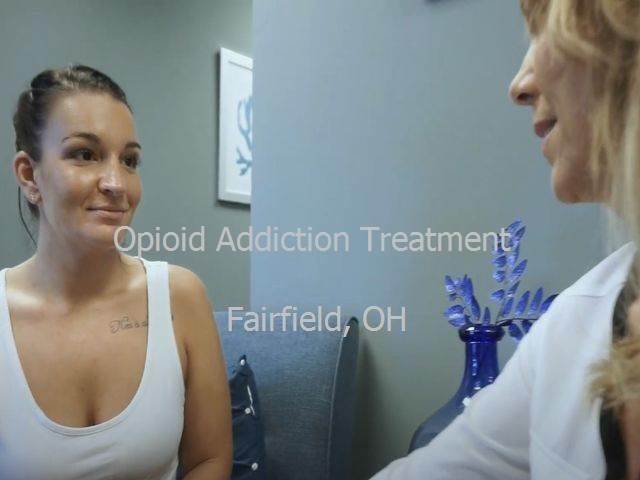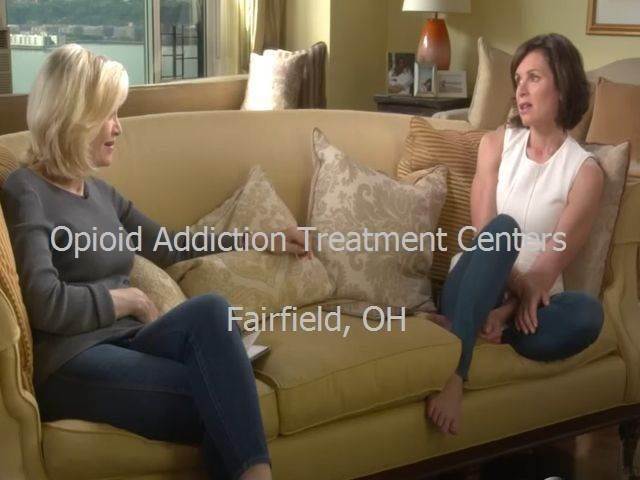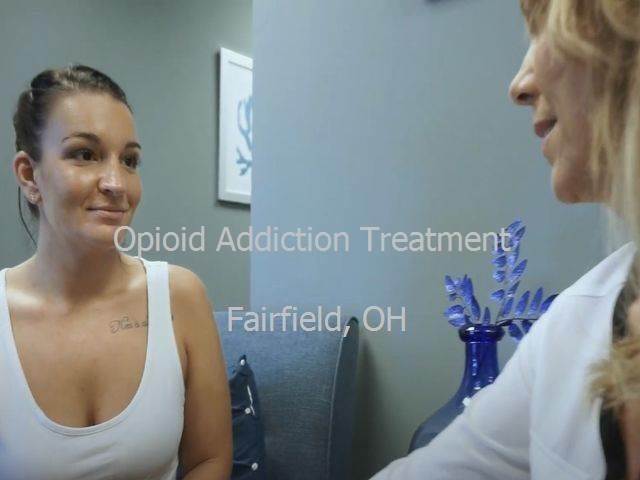Opioid use disorder is a health problem that impacts many people in the United States nowadays. 10s of thousands of individuals pass away from opioid overdose every year, and a lot more are fighting with opioid addiction. Unfortunately, instead of going to the medical facility to get treatment for substance abuse carries a bad stigma, people attempt to eliminate the addiction on their own. This frequently leads to failure and relapse.
The problem of opioid use disorder in Fairfield, Ohio

Although, nowadays, effective treatments for opioid misuse are ending up being more accessible, a lot of people still experience this concern. They often blame themselves and their absence of willpower for the inability to fight drug addiction. In reality, this condition is not a kind of bad behavior or a sign of ethical failure. It is a chronic medical condition that involves substantial changes in particular parts of the brain, a physical dependence that is extremely difficult to fight without expert support. Just just recently, doctor came close to understanding the system of opioid addiction and developing much better opioid treatment programs.
The Fairfield, Ohio, opioid addiction treatment center provides a number of ways of treating substance use disorder. Keep reading to learn more about the nature of opioid addiction and which types of treatment provide the patients a greater chance of successful recovery.
Opioid addiction treatment rehabilitation services
National institutes for health care established numerous methods of helping patients with opioid dependence. Some of them include taking addiction medicine to handle opioid cravings. In many cases, treatment retention is recommended. It is vital to openly discuss your situation with health care providers to select the most effective treatment plan.
Substance abuse treatment consist of a number of types:
- Treatment retention. Some people wish to get away from the environment that encourages opioid misuse. They can not fight drug abuse when they are surrounded by triggers and their family members or buddies have easy access to opioids. The drawback of this technique is the requirement to take a break from work. The favorable aspect of this program is satisfying people with the same struggle and getting their support.
- Outpatient opioid addiction treatment. Clients can continue to work and live as they did while getting health and human services. They go to health center for systematic reviews, therapy and medications. This is a less extreme change of way of life compared to residing in the treatment facilities. Such patients do not risk losing their tasks however need to be accountable about remaining on track.
- Behavioral therapy. This type of treatment involves informing patients on how to make positive modifications in their habits connected with opioid use disorders. They get access to the whole variety of mental health services such as cognitive behavioral therapy, private counseling, contingency management, family therapy, support groups, and so on.
- Medication assisted treatment (MAT): medications plus counseling. Whether it is a property program or an outpatient healthcare service, any treatment plan can include taking medications. This type of treatment of opioid misuse has proven to be very reliable. Regretfully, it is often misinterpreted and treated with suspicion. Medications that are used to treat opioid addiction belong to the group of opioids themselves, so there is a misconception that by taking them you merely change one addiction with another. This is not real for two reasons. Initially, the medications do not produce the euphoric effects unlike other opioid drugs. And second, the statistics show that applying medical assisted treatment helps to considerably reduce the number of deaths from overdose
- The disadvantage of this kind of treatment is that it is not widely available. Prior to the practitioners can recommend these medications, they require to undergo specific training. And after they complete the course, they can only recommend this treatment to a restricted number of clients. For that reason, centers that supply MAT frequently have a long waiting list. The advantage of this kind of treatment is that thanks to the medications, the patients do not experience extreme withdrawal symptoms. The cravings are not so strong too, so most people remain in treatment and are less likely to regression.
Just a professional clinician educated on substance use disorder can pick the very best treatment. The doctor requires to understand and consider all the factors that led an individual to drug abuse and mental illness. Contact the opioid addiction treatment center in Fairfield, Ohio, to get certified assistance.
System of opioid addiction
Opioid drugs hack the reward system of an individual’s brain and make the individual feel excellent if they take opioids. Normally, fulfilling such needs as eating or recreation results in the release of dopamine. This hormone is responsible for the sensation of satisfaction or fulfillment. It rewards individuals for doing things that are essential for the survival of humankind.
When opioids reach the brain, they attach themselves to particular receptors, which activates the reward system and develops the feeling of high. People want to experience that sensation once again. More notably, their brain signifies them that taking opioids is the most important thing for their survival. That is how the addiction settles in.
There are 2 outcomes of this modification in the brain:
- The first one is the advancement of drug tolerance. Individuals require more drugs to reach a state of euphoria. Opioid use disorder often begins with prescription painkiller. In some cases patients increase the dosage of prescription opioids to get high, and this results in opioid abuse. Some individuals even switch to stronger drugs like heroin.
- The 2nd outcome is opioid dependence. People continue substance abuse to prevent withdrawal symptoms. Due to malfunction of the reward system, without the drugs individuals feel uneasyness and have a horrible state of mind.
Other signs of opiate withdrawal include:
- Body aches;
- Absence of sleep;
- Queasiness;
- Diarrhoea;
- Goosebumps, etc.
Understanding about the nature of substance use disorders can assist physicians inform their patients on what withdrawal symptoms to expect and how to deal with the cravings. Depending upon the client, doctors choose the most effective treatments that may consist of medicine prescription and behavioral therapies. It might not be possible to entirely get rid of the opioid addiction, however mental health services can considerably reduce the opioid misuse and the variety of heroin overdose deaths.
Opioid addiction needs to be treated the method one would treat a chronic illness. Individuals suffering from drug addiction are encouraged to join the Fairfield, Ohio, rehab programs and enhance their health and total quality of life. When you stop the drugs, come back for maintenance treatment.
Who can get treatment for opioid abuse in Fairfield, OH?

People typically feel embarrassed to go to the hospital for opioid abuse treatment. There are 2 main reasons for this: they are either afraid to have a bad image in the neighborhood or have already given up on themselves. However these issues need to not dissuade clients from battling substance use disorders. Anyone is free to reach rehabilitation centers and see what aid they can get.
Two main classifications of opioid use disorders are treated with Fairfield, Ohio, rehab programs:
- Prescription drug abuse. Opioids are usually recommended in the form of pain relievers for persistent or severe pain. It is possible to establish addiction to these medications. As a result, some patients start to misuse opioids and take larger dosages of them. National institutes such as the Center for disease control developed suggestions on how to assist these clients slowly lessen the drug use.
- Heroin addiction. This disorder routinely originates from the previous one. However some people turn to this drug for leisure purposes. Battling heroin addiction is very hard, and patients need to utilize all the treatment resources they can access. Even then, it typically takes several efforts to beat the condition.
The most effective treatments usually consist of both mental health services and medications.
Frequently Asked Questions – FAQ
Is opioid addiction a mental illness?
Opioid use disorder is a persistent brain condition. Initially, people might turn to drugs because of individual issues. That is why substance abuse and mental health are typically treated all at once. Many clients benefit from counseling, behavioral therapies and support groups. However it is important to bear in mind that opioids make significant changes to the brain, making it very hard to fight the addiction without medications.
What medications are used to treat opioid use disorder in Fairfield, Ohio?
National institutes approved three medications for treatment of opioid drug abuse: methadone, buprenorphine and naltrexone. They have different names and effects on the brain. The first 2 medications change the opiates and smooth the withdrawal symptoms without making the patients high. Naltrexone blocks the mu-opioid receptor, working as an opioid antagonist.
How do I get medication-assisted treatment in Fairfield, Ohio?
Just a qualified clinician can prescribe you medications for opioid use disorder. Visit the workplace of a healthcare supplier that completed the essential training and look for a program of medication-assisted treatment.

